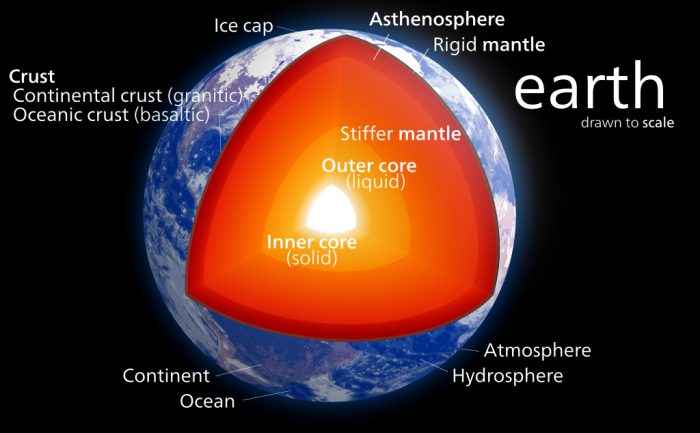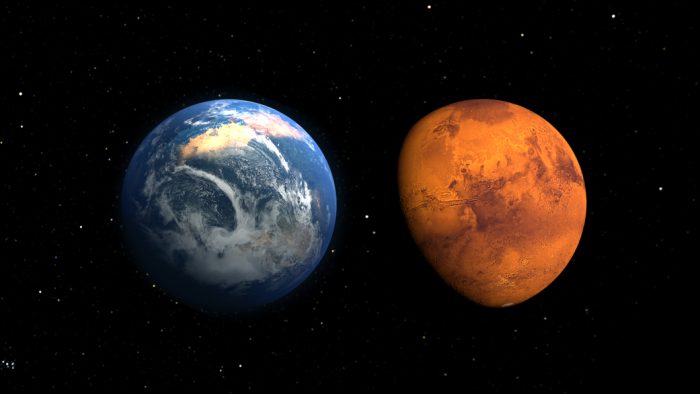In a huge first, scientists have mapped the insides of a planet other than Earth. That planet? You guessed it. It's Mars. Their conclusion?
It's ooey gooey!
Much to the surprise of the researchers, Mars has a larger, more liquid core than experts even suspected. Before this, they assumed it was smaller and more solid—more in line with what we have here on (or is that 'in') Earth.
How did they come to this remarkable finding? They used a little insight!
Listening in

An artist's impression of how InSight is measuring Mars' seismic activty. (NASA)
Back in 2018, NASA landed a probe on the surface of Mars called InSight. Unlike the rovers—Opportunity, Curiosity, and the brand new Perseverance—it wasn't mobile. Instead, it just sat in one place, with a long device inserted down into the planet's crust. Its job?
To listen to the 'heartbeat' of Mars, a.k.a. seismic data.
On Earth, seismic data is what gives us information about tectonic plates moving, earthquakes, volcanoes erupting, and more. And sure enough, before very long, InSight was collecting data about marsquakes!
Marsquakes were a significant discovery because they showed that Mars wasn't as 'dead'—or geologically inactive—as previously thought. It was still at least a little alive!
What is geological activity?

Earth's insides, as we understand them today. (Wikimedia Commons)
Geological activity is essentially how many things like quakes, volcanoes, geysers, and tectonic movement that a celestial body has.
Earth, for example, is very active. Even when it is happening very slowly, the sections of its crust are always in motion. And there's always energy from the mantle bubbling up to the surface somewhere or other.
The Moon, on the other hand, is geologically inactive. No volcanoes, no movement.
Though Mars has evidence of a very active past (in fact, the solar system's largest volcanic mountain—Olympus Mons—is ON Mars!), it was long thought to be much more like the Moon than Earth these days. But now InSight's insights have changed that.
Getting to the core

And how we see Mars' insides, thanks to InSight. (IPGP/David Ducros)
Since it first arrived, InSight has mapped over 700 marsquakes. These events sent tremors through the planet, giving InSight the chance to 'see' into its interior. It used data from 35 of these quakes to put together a new understanding of the planet's guts.
Mars' core is made of a nickel-iron alloy, like Earth. But Earth's core has a radius of 1280 km (800 miles), with a liquid exterior that swirls around a solid centre. The Martian core is all liquid and has a radius of 1770 km (1100 miles)—about half the thickness of the entire planet!
Of course, this is all still just a hypothesis. Even our understanding of Earth's insides is an educated guess. But it gets scientists closer to understanding how the planet went from a place that was probably similar to Earth a billion years ago to what it is today.
The journey to understanding the history of our neighbour is only just beginning!
 Did Mars once look like this on the surface? Scientists are searching on—and below—the surface to find out. (NASA)
Did Mars once look like this on the surface? Scientists are searching on—and below—the surface to find out. (NASA)









